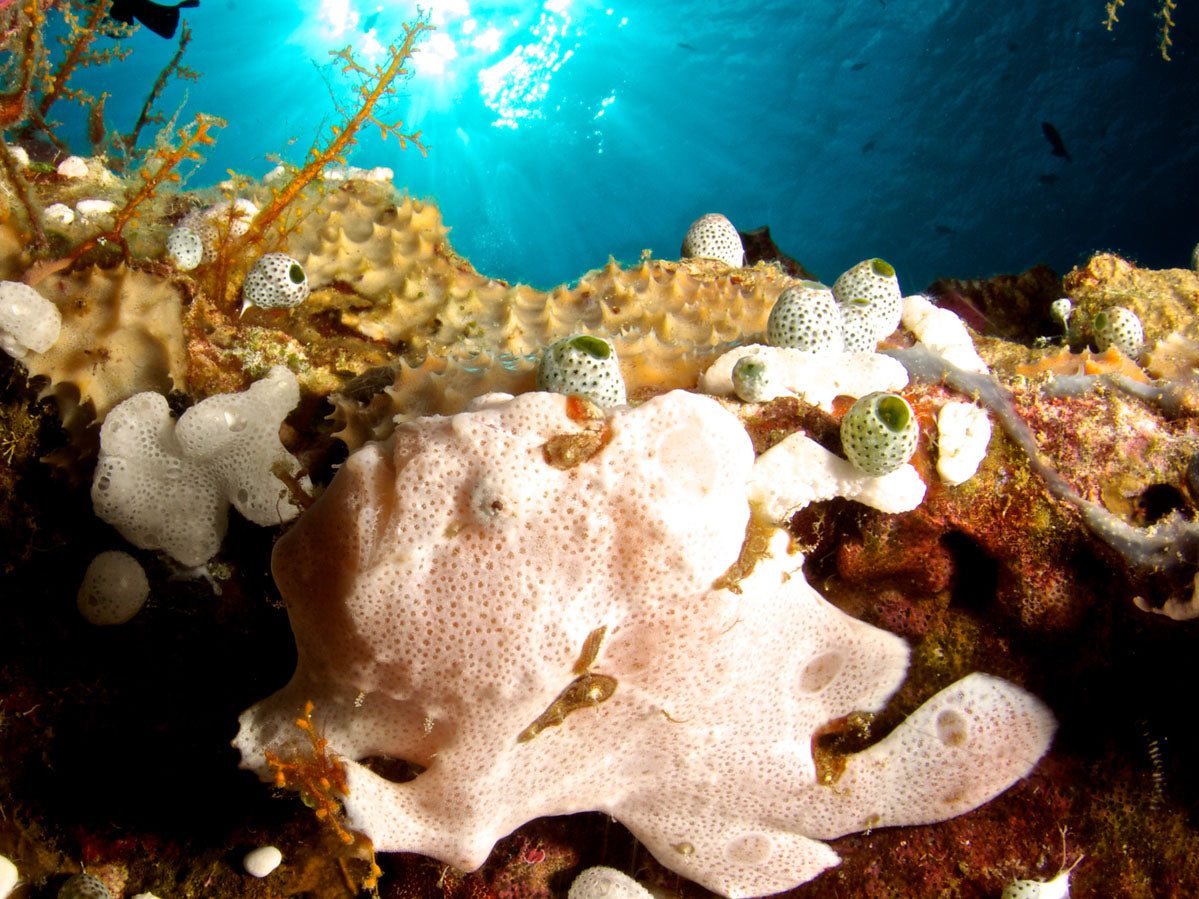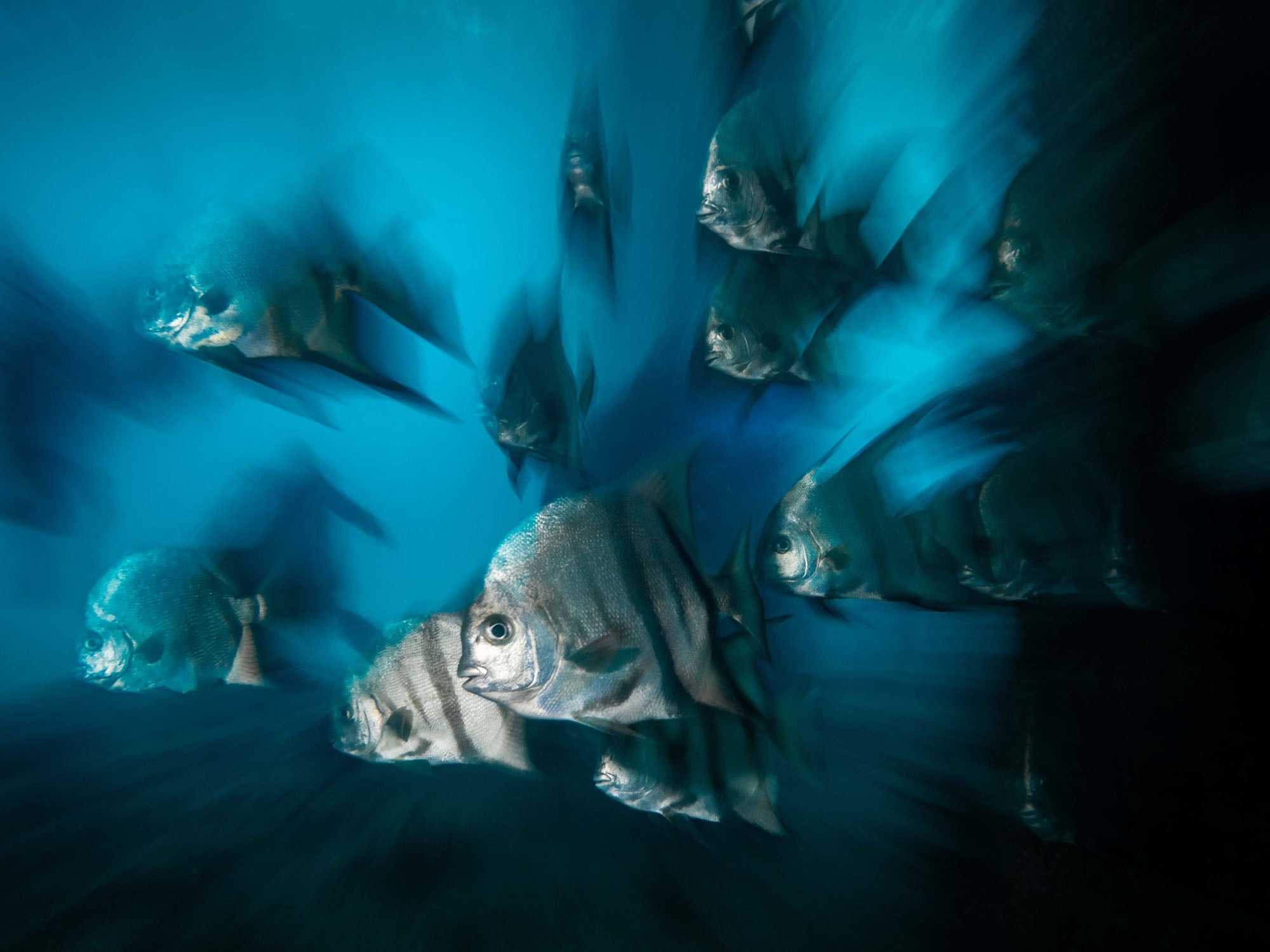Frogfish are those cartoonish looking creatures you may or may not see on a dive, and one reason you might not see them is because they're experienced camouflage artists. While they prefer tropical waters, Frogfish are found nearly worldwide in oceans across the globe with the exception of the Mediterranean Sea. If you're lucky enough to spot one - look in shallower areas among coral or rocky habitats - you've got a captive audience. Frogfish are ambush predators meaning they will lie in wait for their prey and they'll typically lie around for your camera too.

A macro lens will capture the ornate detail of a frogfish's face
DSLR + Mirrorless
ISO: A low ISO of 200 or so should be fine here since we are probably using flash from very close distances. The flash is necessary to image colors- particularly red.
Mode: Manual on the camera, with strobes set to TTL is the most direct solution.
Aperture: F-11 to F-22 will ensure that your subject - as well as your background - will be in sharp focus.
Shutter Speed: 125th to 160th second are our typical flash synch shutter speeds. However, you may go slower (as slow as you like) without worrying about flash synch.
Pro-tip: Since the subject will probably hold stone still, this can be an opportunity to experiment with slower shutter speeds often called “dragging the shutter." When you do this anything moving in the frame (small fish etc.) will have a soft motion blur that can be aesthetically and artistically pleasing.
Lens: Any lens from super macro to super wide angle will work here. Most images you see of these animals will be from a macro lens, but the fisheye can be spectacular from inside a foot or so away.

This frogfish is only about 2.5in (6.35cm) long, shot with a 10-17mm fisheye lens. This forces the photographer to get very close, just inches away.
Point + Shoot
ISO: Low, 200-400.
Mode: If you camera accepts Manual, this would be the first choice if not, Aperture Priority or Shutter Priority will be your choice. Keep in mind that a strong flash will bring out the colors, if the flash is just “filling in” or you are shooting natural light, the image will be more monotone.
Aperture: Stopping down your lens for a small Aperture (F/11-F/22) will help by giving you a greater depth of field.
Shutter Speed: 1/60th-125th to start, but any flash synch speed will suffice here because the animal isn’t moving.
Lens: No matter what focal length you are carrying with you it will work. If you are using a zoom try using it all the way out then all the way in, the perspectives will be different but equally interesting.
Technique
Frogfish are ambush hunters who spend long periods of time staying still on the bottom as opposed to free swimming, this is important. This particular behavior presents an opportunity for images, largely because their favorite hunting spots are often perched up high, so we can more easily obtain an upward camera angle. Also, as long as they are approached carefully, these animals will often stay in place through a whole series of captures.
The macro lens is the obvious choice for these animals based on their size, but since we can shoot these fish at super close distances a super wide angle lens or fisheye can produce beautiful images too.

Strobes will be your friend here - pulling out the brilliant colors of frogfish hidden among coral and rock.
Strobes
I will always pause to photograph any of these animals, because although they often look exactly like the rocks around them the strobe will reveal colors that make them stand out like a sore thumb.
Pro-tip
If you usually leave your strobe(s) in the same position, this is an opportunity to move them around and experiment with different lighting. Few subjects will hold still long enough for this. See what happens when one of your strobes is pointed away from the scene and you side light with the other. If you are able, try to get one of your flashes behind the fish for backlighting - this can be very dramatic. If your strobe arms are too short for this and you have a buddy that will hold one of your strobes for you the cords are plenty long. The trick will be to not have the strobe itself or your buddy’s hand in the image.
Additional Reading
Underwater Macro and Wide Angle with Compact DS51 II Strobes
Macro Close-Up Underwater Camera Settings
Wide Angle Fisheye to Macro on the Same Dive with the Olympus Tough TG-6
Shooting the Colorful and Camouflaged Flathead Crocodilefish













